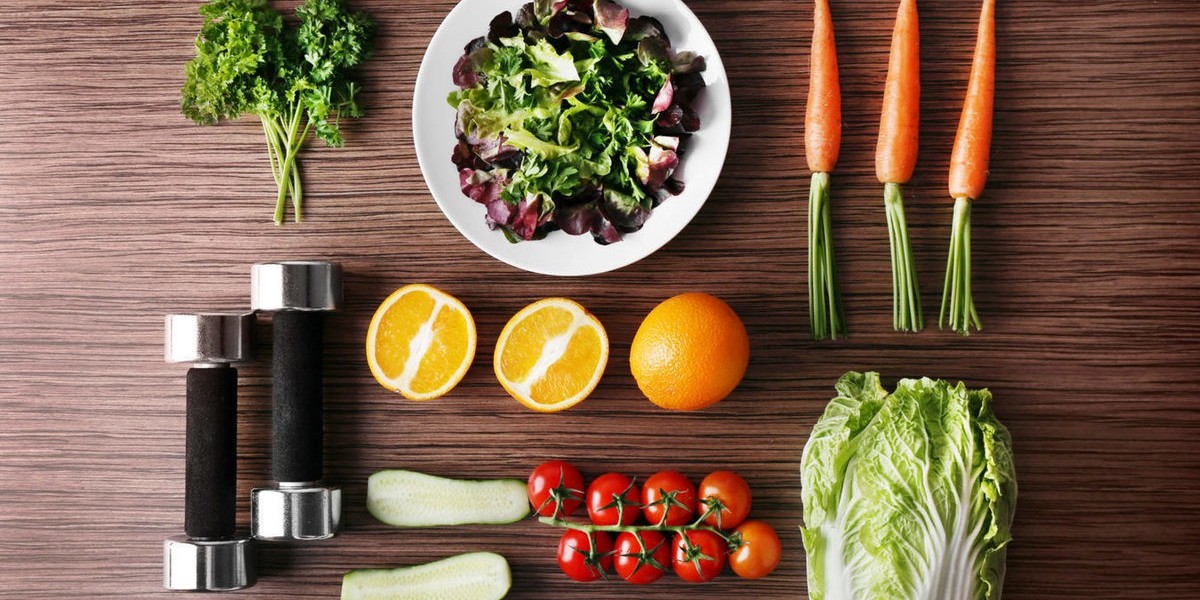When it comes to achieving a healthy lifestyle, fitness and diet go hand-in-hand. Whether you're looking to lose weight, build muscle, or simply improve your overall well-being, a balanced approach to exercise and nutrition is key. But with so much information out there, it can be overwhelming to know where to start. This article provides a comprehensive fitness and diet plan that will help you reach your goals efficiently and sustainably.
Step 1: Define Your Goals
Before diving into any best fitness plan or diet plan, it's important to define your specific goals. Are you aiming to lose weight, build muscle, increase endurance, or improve flexibility? Knowing your goal will help tailor your fitness routine and diet plan to meet your needs. Keep in mind that some goals may require a combination of different strategies. For example, losing weight often involves both calorie control and regular cardio, while building muscle may require more strength training and a higher protein intake.
Step 2: The Best Fitness Plan
A balanced fitness plan includes a combination of cardiovascular exercises, strength training, and flexibility exercises. Here’s how to structure your fitness routine:
Cardiovascular Exercise (3-4 days per week) Cardio is essential for improving heart health, burning calories, and increasing endurance. Examples include:
Running or jogging
Cycling
Swimming
HIIT (High-Intensity Interval Training)
Aim for at least 150 minutes of moderate-intensity or 75 minutes of vigorous-intensity cardio per week, or a combination of both.
Strength Training (2-3 days per week) Strength training is crucial for building muscle, boosting metabolism, and increasing bone density. Focus on major muscle groups, such as:
Legs (squats, lunges, leg presses)
Back (rows, pull-ups, lat pulldowns)
Chest (push-ups, bench press, chest fly)
Arms (bicep curls, tricep dips)
Core (planks, crunches, Russian twists)
Start with lighter weights and progressively increase the resistance as you get stronger. Aim for 3-4 sets of 8-12 reps per exercise.
Flexibility & Recovery (2-3 days per week) Incorporating stretching and mobility exercises can enhance flexibility, prevent injury, and aid in muscle recovery. Activities like yoga or Pilates can be beneficial for this.
Spend at least 10-15 minutes each day stretching, focusing on areas that tend to get tight, such as the hamstrings, hips, and shoulders.
Rest & Recovery Don’t underestimate the power of rest! Rest days are essential for muscle recovery and preventing burnout. Make sure to include at least one or two full rest days per week, and listen to your body to avoid overtraining.
Step 3: The Ideal Diet Plan
A nutritious diet is just as important as exercise in achieving your fitness goals. The right diet will fuel your workouts, aid in recovery, and help you achieve your desired results. Here’s how to structure your diet:
Macronutrients: The Building Blocks Your macronutrient intake should be balanced to support your fitness goals. Here’s a breakdown of the three main macronutrients:
Carbohydrates: They are the body’s primary energy source, especially during exercise. Focus on complex carbs such as whole grains, fruits, and vegetables. Good sources include brown rice, quinoa, oats, sweet potatoes, and leafy greens.
Protein: Protein is essential for muscle repair and growth. Aim to consume a variety of protein sources, including lean meats (chicken, turkey), fish (salmon, tuna), eggs, legumes, and plant-based protein sources like tofu and tempeh. The recommended intake is about 1.6-2.2 grams of protein per kilogram of body weight, depending on your fitness goals.
Fats: Healthy fats support hormone regulation, brain function, and joint health. Include sources of omega-3 and omega-6 fatty acids, such as avocado, nuts, seeds, olive oil, and fatty fish like salmon.
Micronutrients: Don't Forget the Essentials Vitamins and minerals are vital for overall health and optimal performance. Aim for a diverse range of colorful fruits and vegetables, which provide antioxidants and essential nutrients. For example, leafy greens are rich in iron and calcium, while berries are packed with vitamins C and E.
Hydration: Drink Up Staying hydrated is crucial for muscle function, digestion, and overall health. Aim to drink at least 8 glasses (2 liters) of water daily, more if you're engaging in intense workouts or spending time in hot climates. Herbal teas and coconut water are also great options for hydration.
Portion Control & Meal Timing Managing portion sizes is important for maintaining a healthy weight. Instead of counting calories obsessively, try to eat smaller meals throughout the day (every 3-4 hours) to keep your metabolism stable. Include a source of protein with every meal to promote muscle repair and satiety.
Sample Day of Eating:
Breakfast: Oatmeal with chia seeds, berries, and a dollop of almond butter
Mid-morning snack: Greek yogurt with a handful of almonds
Lunch: Grilled chicken breast, quinoa, and roasted vegetables
Afternoon snack: Apple slices with peanut butter
Dinner: Baked salmon with steamed broccoli and sweet potato
Evening snack (optional): Cottage cheese with a few berries or a protein shake
Step 4: Track Your Progress
Tracking your progress is essential to stay motivated and adjust your plan as needed. Keep a fitness journal to log your workouts, note any physical changes (e.g., weight, measurements), and track how your body feels throughout the process. Apps like MyFitnessPal can help you monitor your calorie intake and ensure you’re hitting your macronutrient goals.
Step 5: Consistency is Key
The most important factor in achieving long-term success with any fitness and diet plan is consistency. You won’t see results overnight, but by staying dedicated to your workouts and nourishing your body with healthy foods, you’ll be well on your way to achieving your fitness goals. Remember to be patient with yourself, celebrate small victories, and trust the process.
Conclusion
A well-rounded fitness and diet plan is the foundation of a healthier lifestyle. By incorporating a mix of cardio, strength training, flexibility exercises, and a nutrient-rich diet, you can achieve lasting results and feel your best. Focus on building sustainable habits rather than quick fixes, and always listen to your body. With dedication, consistency, and the right approach, you’ll be able to transform your fitness and diet routine into a lifestyle that brings you closer to your goals.







